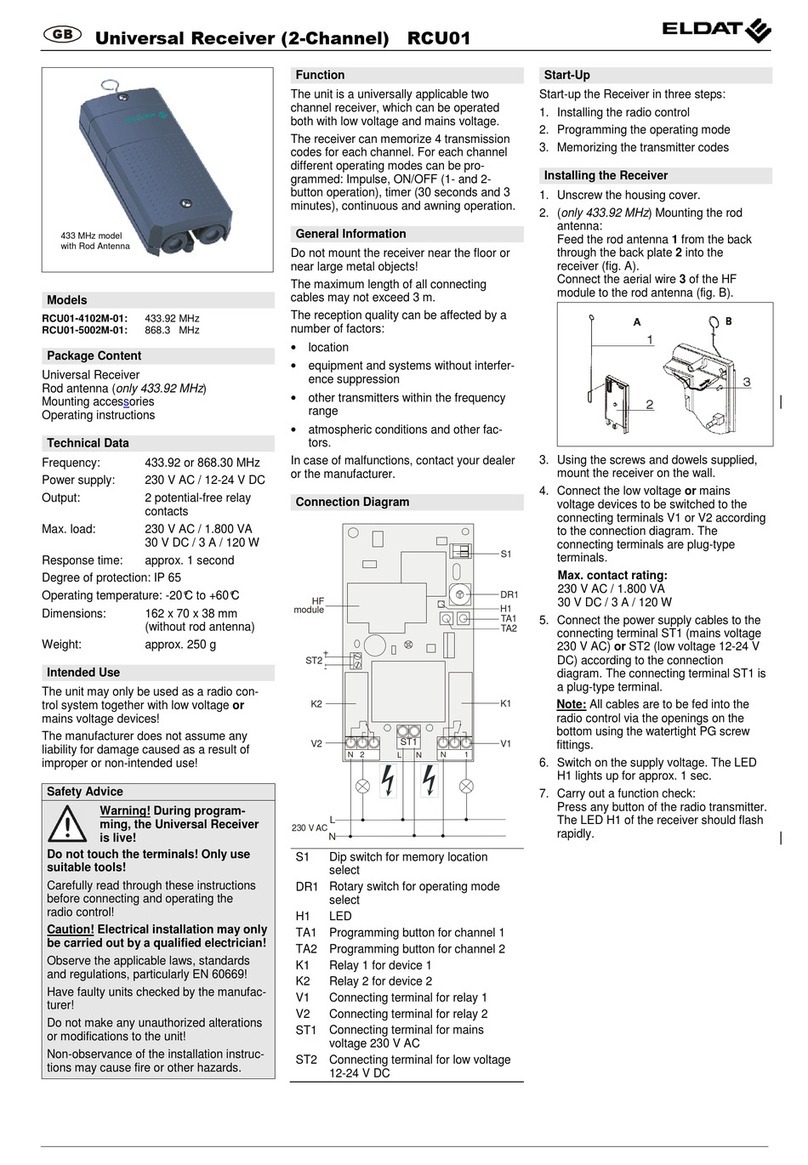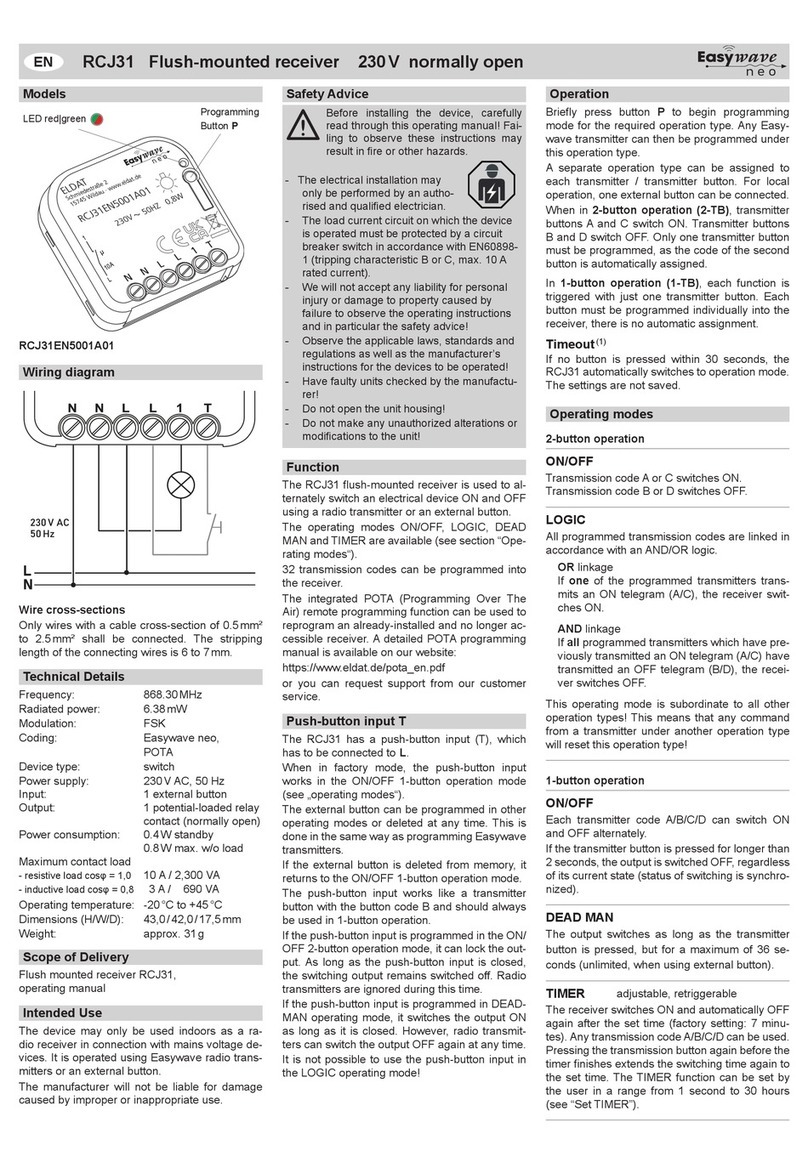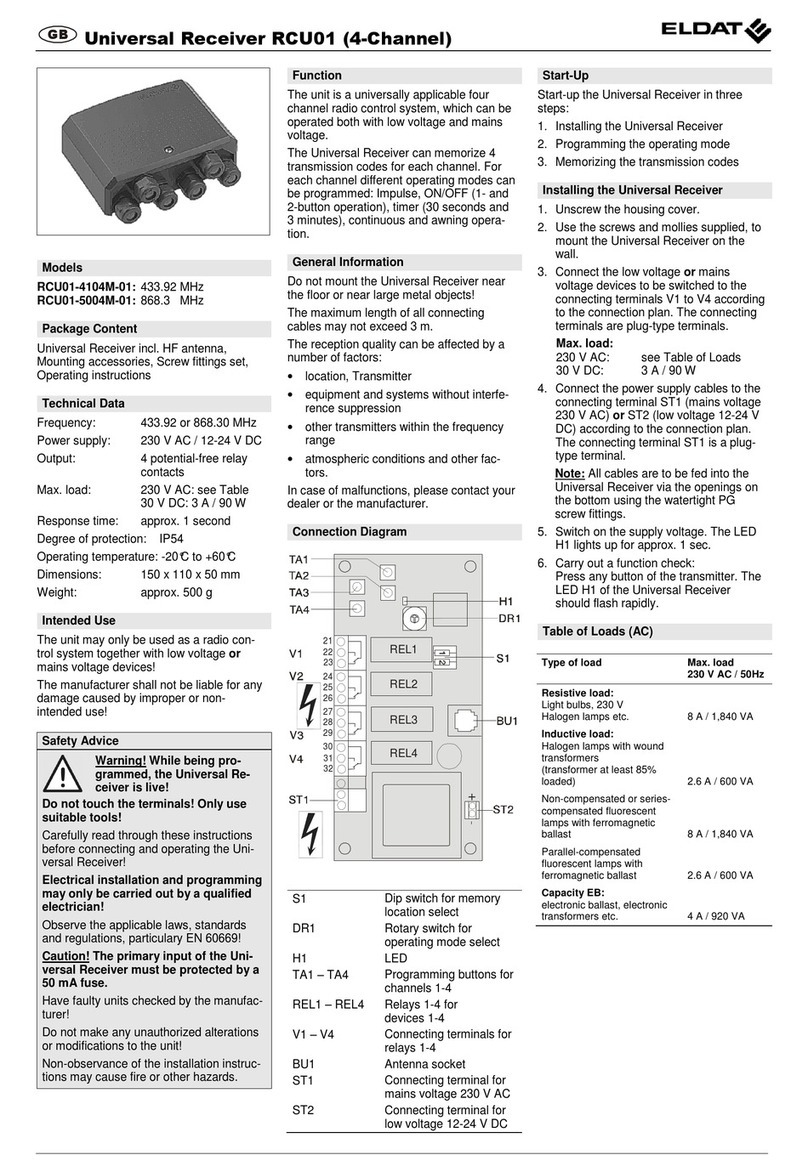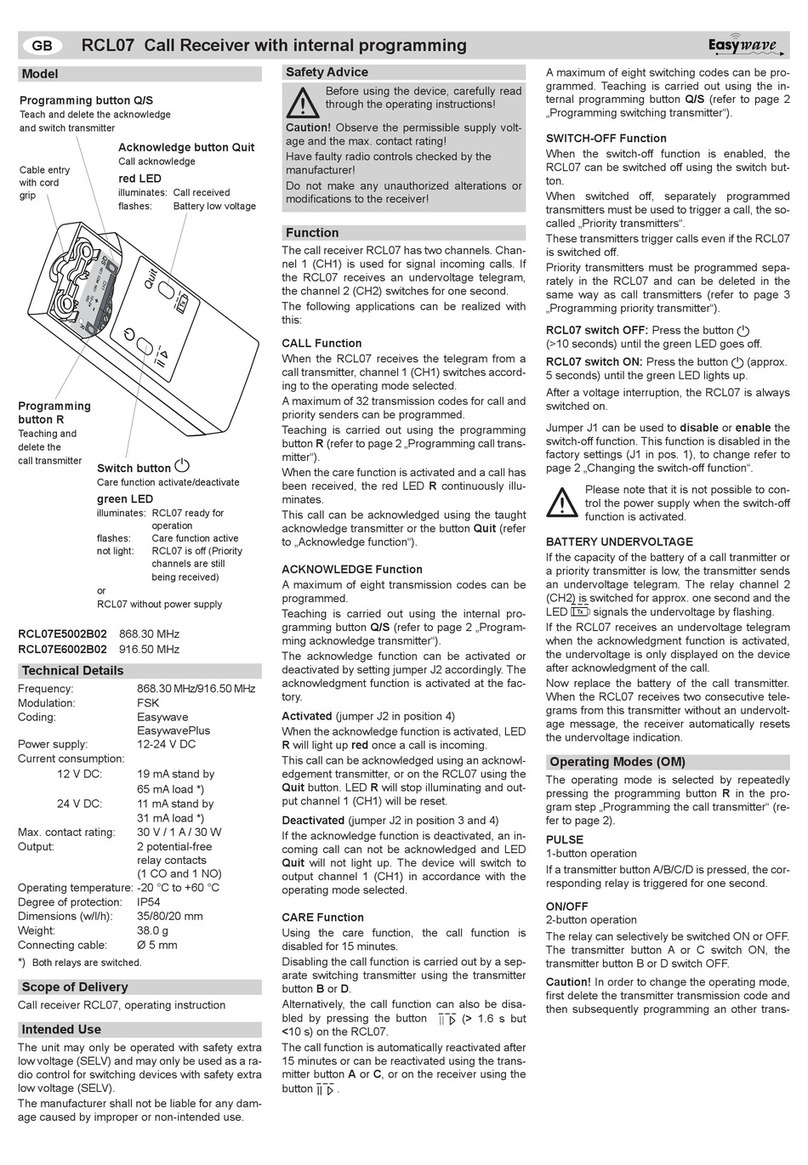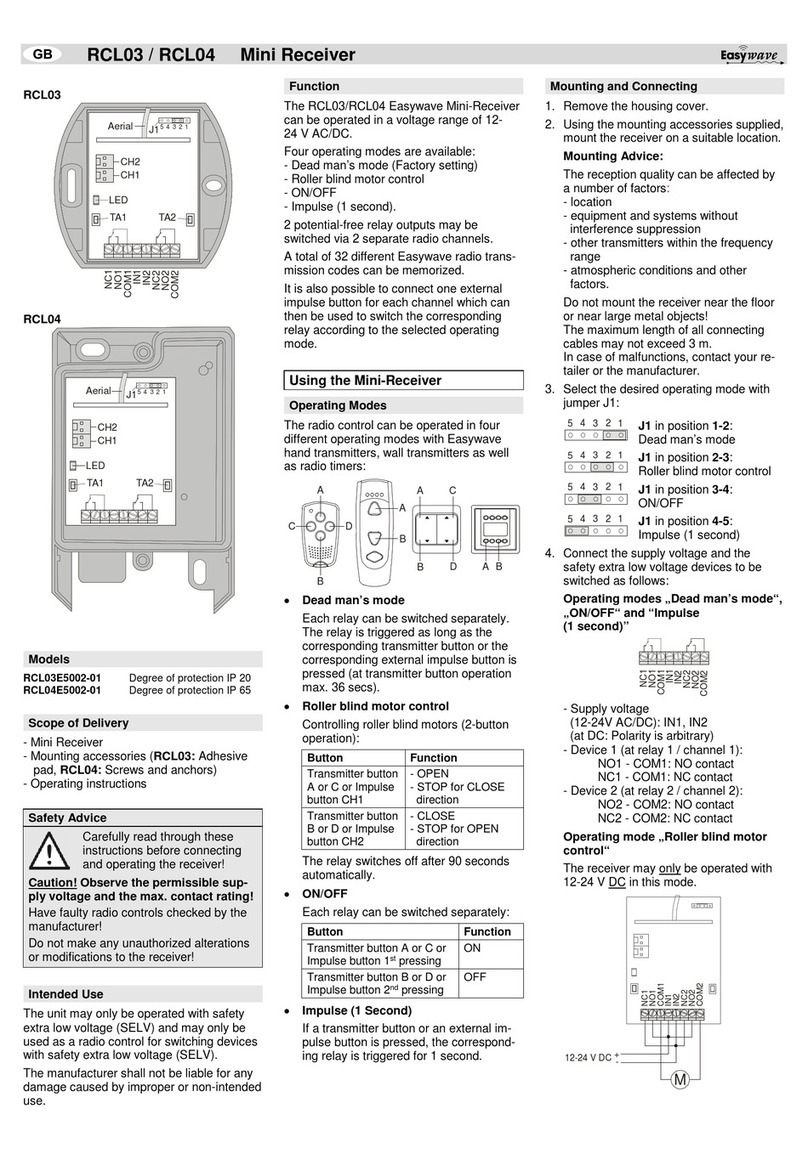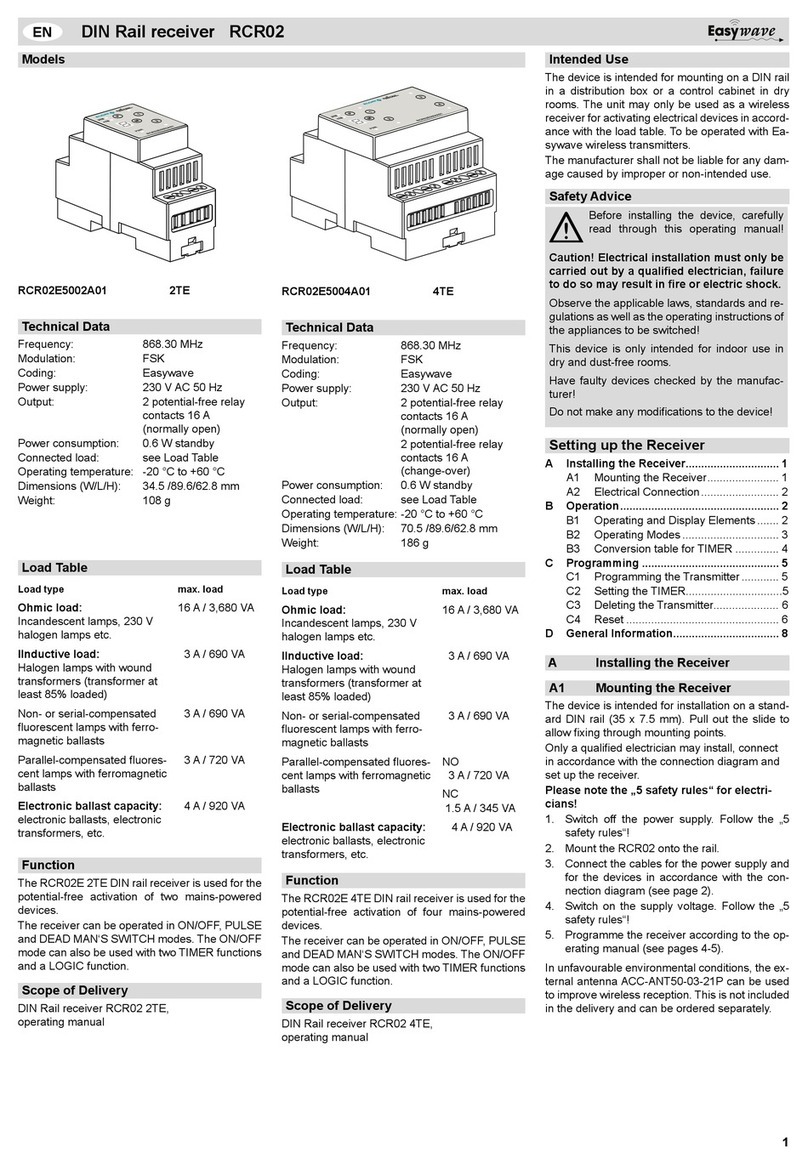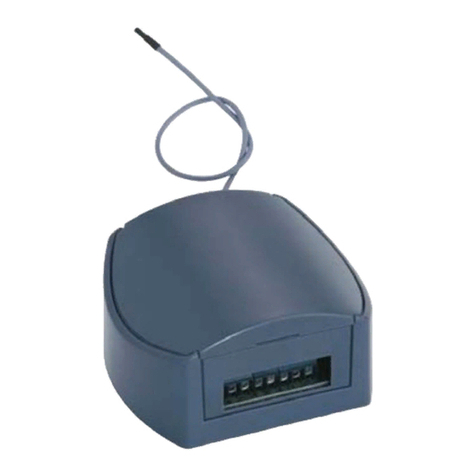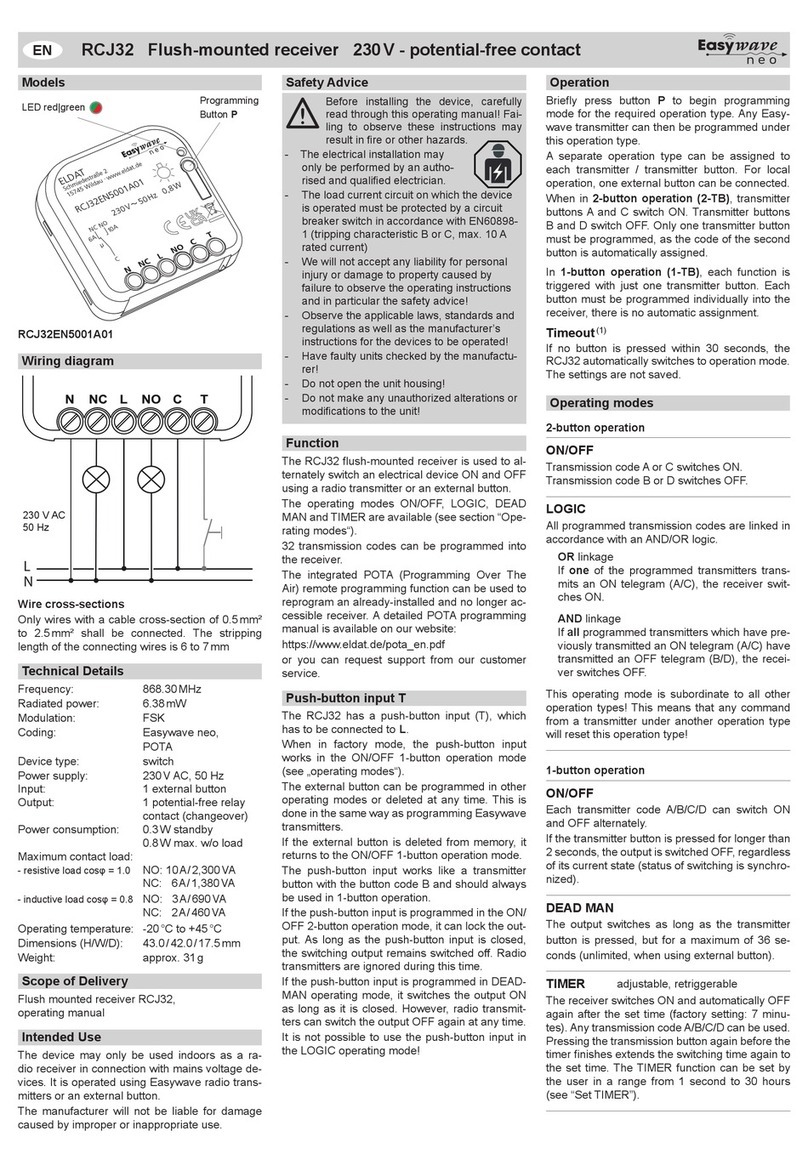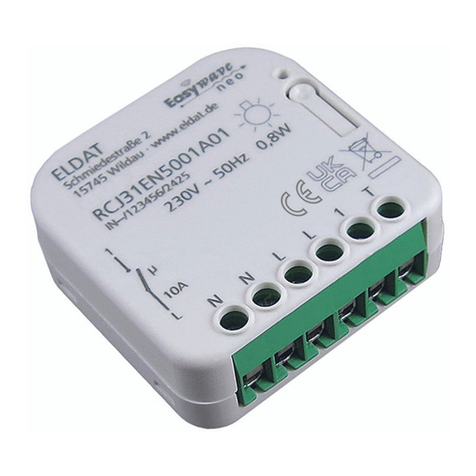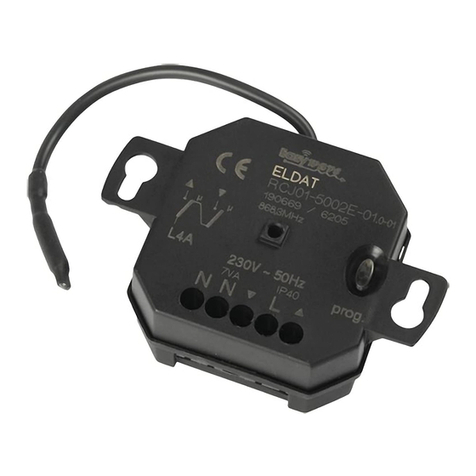23
2.1 Selecting the Location
Choosing the location for the installation please
take into account that the reception quality and
sensitivity of the Universal Receiver RCU08 can
be disturbed by several factors:
-
equipment and systems without interference
suppression
-
other transmitters within the frequency range
-
atmospheric conditions and other factors.
Transmitter and receiver should be located in a
way that the shortest distance between them (air
line distance) is not or only slightly disturbed by
brick walls or other absorbing materials or any
disturbance. This way losses due to absorption
which influence the operation range of the
receiver can be reduced to a minimum.
Following values can be taken for reference:
Material Range
air/no obstacle 100%
wood, hard plaster 80–95%
brick/concrete 60–90%
reinforced concrete 10–50%
metal walls, metal gratings 0–10%
Do not mount the receiver or the aerials on the
back of metal surfaces on the floor or in recesses
to avoid radio shadows.
When mounting the unit on metal surfaces, a
minimal distance of 10 cm should be kept.
Changes such as lengthening, shortening,
bending etc. may influence the receiving
properties considerably.
In case any problems occur contact you retailer
or for more information see: „ “www.eldat.de
32 transmission codes can be memorized and
for each transmission code an operating mode
as well as a specific time function for the oper-
ating time and switching time can be defined.
The following operating modes can be se-
lected:
ON/OFF (2-button-control): for switching ON
use transmitter button A or C, for switching OFF
use transmitter button B or D.
ON (1-button-control): the consumer can be
switched ON with any separately learnt
transmitter button. An operating time of either
1.5 or 3 s can be selected.
OFF (1-button-control): the consumer can be
switched OFF with any separately learnt
transmitter button. An operating time of either
1.5 or 3 s can be selected.
Timer (1-button-control): the relay can be
switched with any transmitter button according
to the desired switching time T.
ON/OFF (1-button-control): using the toggle
function the consumer can be switched ON or
OFF by repeatedly pressing the transmitter
button.
UP/STOP/DOWN (2-button-control): use
transmitter button A or C to open awnings, the
buttons for the opposite direction B or D can be
used to drive the motor in the opposite direction
or stop the awning.
UP (1-button-control): use any transmitter button
to open the awning.
DOWN (1-button-control): use any transmitter
button to close the awning.
STOP (1-button-control): use any transmitter
button to stop the awning.
UP/STOP/DOWN (4-button control): use
transmitter button A to open awnings, button C
or D to stop it. Button B closes the awning.
2 Start-Up
1.6 Safety Advice
The unit may only be used as a radio control in
connection with mains consumers!
The manufacturer shall not be liable for any
damage caused by improper or non intended
use!
Carefully read these operating
instructions before connecting and
operating this unit!
The device may only be installed and started
up by a qualified electrician!
All consumers may only be connected while
the unit is completely voltage free.
During programming the device
is under voltage! Programming
may only be performed with the
protective cover installed.
Have faulty units checked by the manufac-
turer!
Do not make any unauthorized alterations or
modifications to the unit!
Read the advices of the manufacturers about
the consumers you wish to operate!
Observe the requirements of EN 60669!
-
-
-
-
-
-
-
Universal-Receiver RCU08, Cable Fittings M16,
Mounting Accessories, Operating Instructions
RCU08-5002E-01 868,3 MHz
1.4 Scope of Delivery
1.2 Model
1.1 Table of Contents
Page
1 Introduction 2
1.1 Table of Contents 2
1.2 Model 2
1.3 Technical Details 2
1.4 Intended Use 2
1.5 Safety Advice 2
1.6 Function 2
2 Start-Up 3
2.1 Selecting the Location 3
2.2 Mounting 4
2.3 Connection Diagram 5
2.4 Table of Loads 5
3 Operation 6
4 Programming 6
4.1 Operation Controls 6
4.2 Selecting the Operation Mode/Time 7
Function and Memorizing
Transmission Codes
4.2.1 Functions 8
4.2.2 Time Functions 9
4.3 Deleting Specific Transmission 10
Codes
4.4 Deleting All Transmission Codes 10
(Reset)
5 General Information 11
5.1 Cleaning 11
5.2 Disposal 11
5.3 Conformity 11
5.4 Warranty 11
1.5 Intended Use
Frequency: 868,3 MHz
Power Supply: 230 V AC
Output: 2 relay outputs floating
(normally open and
two way contact)
Max. contact duty: see Table of Loads
Degree of Protection: IP66
Operating Temperature: -20 °C to +60 °C
Dimensions: 180 x 94 x 66 mm
Weight: 510 g
1.3 Technical Details
1 Introduction
Function
The Universal-Receiver RCU08 provides two re-
lay outputs. These can be used to control either
two lamps or one motor for e.g. awn-
ings/shutters or garage doors.
The Receiver is protected against splash water.
It can be operated wirelessly or manually using
two buttons.
